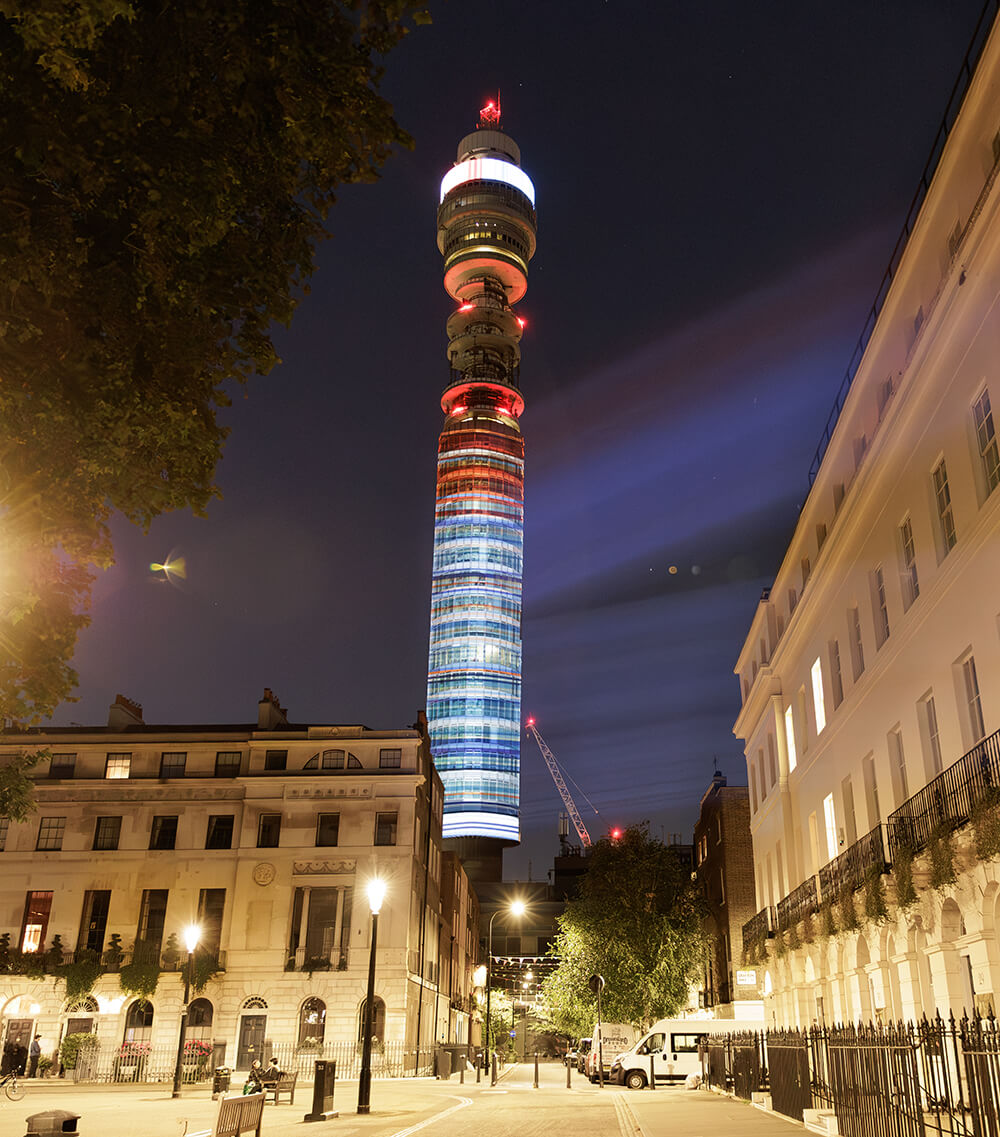The BT Tower has been lit up with the warming stripes in recognition of the issue and the role BT Group is playing to tackle climate change.
The stripes themselves show the progressive heating of our planet in a visual manner. Created by Professor Ed Hawkins of the University of Reading in 2018, each stripe represents the average temperature for a single year, relative to the average temperature over the last 170 years. Shades of blue indicate cooler-than-average years, while red shows years that were hotter than average. The stark band of deep red stripes on the right-hand side of the graphic show the rapid heating of our planet in recent decades.
Friday 21 June is now marked as ‘Show Your Stripes’ day, with businesses and individuals sharing the stripes wherever they can. It is intended to be a global moment to raise awareness about how the climate is changing and the need for urgent action.




BT Group has been a leader on climate action for over 30 years. We’ve been tracking our carbon reductions since 1992, and we went on to become one of the first companies in the world to set a science-based target in 2008.
Sustainability forms a core part of our strategy and sits within Pillar 3: Lead the way to a bright sustainable future. As part of that, we launched a Manifesto in 2021, committing to using technology to accelerate our journey to being a net zero business by FY31 and net zero value chain by FY41, whilst building towards to circular business and helping our customers avoid 60 million tonnes of emissions.

The number of years we've been given an A rating on climate change by CDP - the organisation that assesses an organisation's performance on key environmental topics

Total number of EV's in our fleet (and growing!)

Reduction in our carbon emissions intensity since FY17

Potential number of cabinets we can convert to EV charging points

Tonnes of carbon we've helped customers avoid since 2021.

Total drop in our energy consumption since FY23

Reduction in our Scope 3 emissions since FY17. Scope 3 describes emissions caused by our activities but not owned by us. These include emissions that come from our suppliers and the electricity used by the products we sell.
-
BT Group plc - Annual Report 2024 (pdf - 6.56 MB)
Lots of ways! Within our own operation we’ve rationalised and upgraded our buildings and networks, and reduced our fuel consumption as we continue to migrate our fleet to EVs. In our supply chain, we actively engage with our top suppliers on climate action and disclosure. We’ve recently refreshed our supplier climate change policy, which forms part of our expectations and generic standards applicable to suppliers working with us.
One such expectation is for them to set 1.5°C aligned science-based targets and to report on progress annually. Through industry associations such as the Joint Alliance for CSR (JAC) and GSMA, we continue to collaborate with other communications providers and suppliers to sustainably transform supply chains across the ICT sector.
There is also huge potential to use our networks, products and services to help our customers and wider society to transition to a low carbon economy. Technologies such as full fibre broadband, mobile 4G/5G solutions, cloud computing and the Internet of Things (IoT) can all play a role. To be transparent on how we calculate the carbon emissions avoided by customers, we have published our new carbon abatement methodology.
Alongside considerations and decisions colleagues can make in their roles to support the decarbonisation of our business and value chain, they can also take actions in their homelife. Our Smarter Living Challenge, in partnership with Hubbub, provides ways on how smart tech and simple tips can manage your energy, food and water waste
-
BT Group Carbon Abatement Methodology (pdf - 353 KB)

